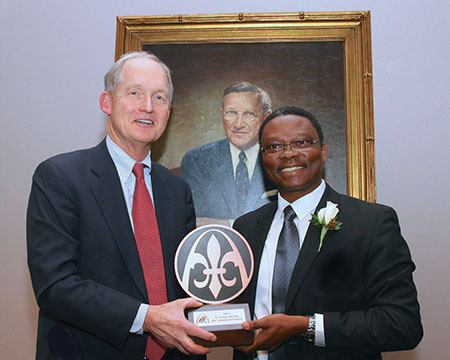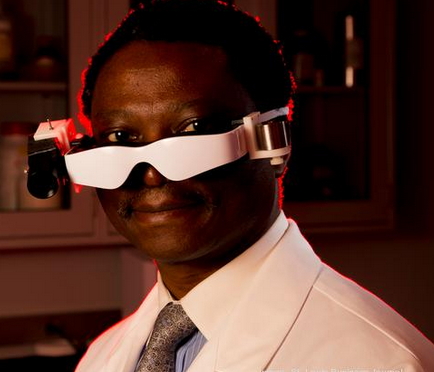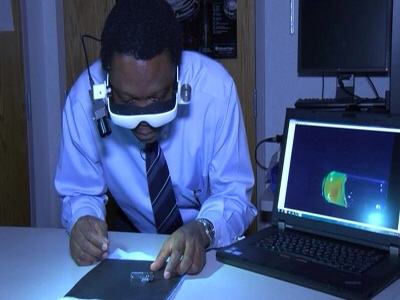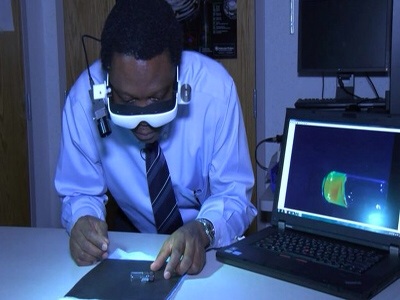
A NIGERIAN-born scientist, Dr. Samuel Achilefu, has won the prestigious St. Louis Award for 2014 for creating cancer-visualizing glasses.

Achilefu, a professor of Radiology and Biomedical Engineering, and his team developed the imaging technology in cancer diagnosis into a wearable night vision-like goggles so surgeons could see the cancer cells while operating.

“They basically have to operate in the dark,” Bloomberg Businessweek quoted Achilefu, 52, as saying.
“I thought, what if we create something that let’s you see things that aren’t available to the ordinary human eye.”
“I thought, what if we create something that let’s you see things that aren’t available to the ordinary human eye.”

Achilefu won a scholarship from the French government to study at the University of Nancy, according to St. Louis Post-Dispatch, a regional newspaper in St. Louis, U.S., and is the 87th person to receive the annual award since it was established in 1931.
Married with two young children, Achilefu moved to St. Louis after he was hired by Mallinckrodt to start a new research department.
Married with two young children, Achilefu moved to St. Louis after he was hired by Mallinckrodt to start a new research department.
“Our efforts start with two words: ‘What if?’” Achilefu said during his acceptance speech.
“These words may sound simple, but they embody the belief that each person has the potential to make a difference, if only he or she can take the time to understand the problem.”
“These words may sound simple, but they embody the belief that each person has the potential to make a difference, if only he or she can take the time to understand the problem.”
According to Bloomberg, the researchers’ technology requires two steps: First, surgeons inject a tiny quantity of an infrared fluorescent marker into the patient’s bloodstream. The peptides contained in the marker enable it to locate cancer cells and buries itself inside.

After the tracer flows through a patient’s body and clears from non-cancerous tissue – which lasts about four hours – the operation would begin. Wearing the goggle, the doctor can inspect tumours under an infrared light that reacts with the dye, causing cancer cells to glow from within.
This month, the goggles have been used on humans for the first time by surgeons at the Washington University School of Medicine.
Four patients suffering from breast cancer and over two dozen patients with melanoma or liver cancer have been operated on using the goggles since they were developed.
Four patients suffering from breast cancer and over two dozen patients with melanoma or liver cancer have been operated on using the goggles since they were developed.
“The goggles function fantastically,” says Ryan Fields, a surgical oncologist who is collaborating with Achilefu to improve on the technology.
“They allow us to see the cells in real time, which is critical. Because the marker has not yet been FDA-approved, doctors are currently using a different, somewhat inferior marker that also reacts with infrared light.”
“They allow us to see the cells in real time, which is critical. Because the marker has not yet been FDA-approved, doctors are currently using a different, somewhat inferior marker that also reacts with infrared light.”
Julie Margenthaler, a breast cancer surgeon, says tens of thousands of women who had had breast cancer lumpectomies go back for second operations every year because of the inability to see the microscopic extent of the tumours.
No comments:
Post a Comment